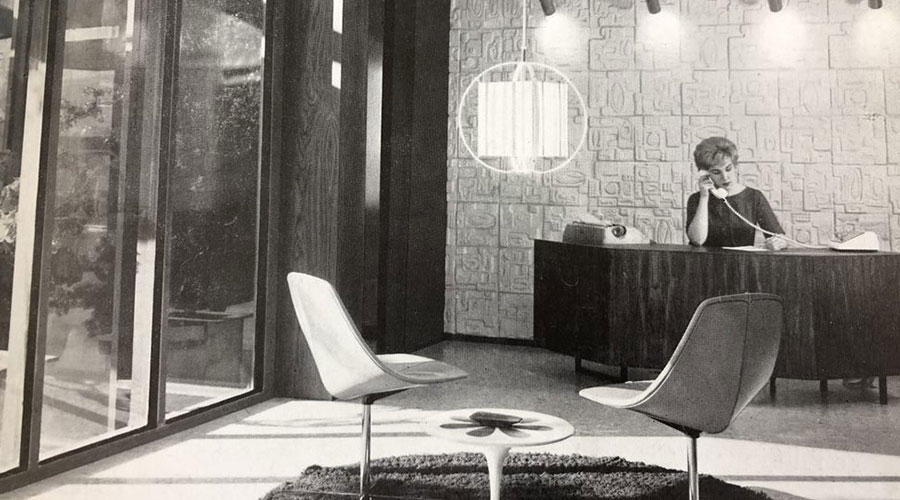Hospital Facility Management in a War Zone
Bob Tanner landed at Baghdad Military Airport in the dead of night. As the plane descended, it made an abrupt dive, a precaution to make the plane harder to hit in case any rockets were fired. Getting off the plane carrying all his possessions in a backpack, Tanner was issued body armor and a Kevlar helmet, and got into a Rhino Runner — an armored steel bus — with armed military escort for the 45-minute drive along Route Irish.
Tanner's destination: Ibn Sina Hospital, at the time the main trauma center for the American and Coalition troops. As the new project manager for the hospital known as Baghdad ER, Tanner was now the equivalent of director of facilities and support services. As far as Tanner knows, he was the only professional civilian hospital facility manager in Iraq during his 15 months in Baghdad.
"The first time a car bomb went off and mortars landed, I thought to myself, "What the hell am I doing here?'" he says.
What he was doing was providing facility management services in support of the 86th and 10th U.S. Army Combat Support Hospital (CSH) units stationed in Baghdad. These units rotate out on a yearly basis, along with the 28th. Ibn Sina Hospital was essentially the main emergency room for American and Coalition forces until Sept. 8, 2009, when it was transitioned back to the government of Iraq. It is slated to become the nation's premier health care facility.
Ibn Sina Hospital, as it existed during Tanner's tenure, comprised 230,000 square feet spread over seven large facilities, including a residence tower, an office building housing CSH support functions, a free-standing morgue, and a dining facility for patients and staff. Including housing and other support structures, there were more than 30 buildings.
The hospital complex became known as "Baghdad ER," after the 2006 HBO documentary on the U.S. Army 86th Combat Support Hospital.
Tanner's mission, as a subcontractor with Linc Government Services, was to maintain the hospital as close to U.S. Joint Commission standards as possible. In a city with no viable utility infrastructure, in a country where it took months of planning to get quality supplies and equipment, in a region with powder-fine dust storms and 120-degree summer days, that was going to be a challenge.
Back to Basics
Stateside, facility managers generally take for granted that certain basics will be readily available: power services from the local utility, potable water from the municipality, and supplies and technicians with a simple phone call. It was a little different in Baghdad.
"Nothing is right at hand here," says Tanner. "Everything has to come from somewhere else."
To begin with: power. In any hospital, going without electricity is not an option. And in Baghdad, with no area power grid to rely on, the generators that are backup power in the States become primary power. To supply the hospital and its support buildings, Tanner's team maintained 12 generators, supplying both DC and AC power, as required. The generators ran 24/7 in rotation. A fuel supplier came twice a day to top off the tanks — at least that was the plan.
Anything coming into central Baghdad has to stop at one of the main security gates. Those gates could be shut down due to security threats, sometimes for days, and even when they were open long waits were not unusual. There were times when the generator fuel tanks ran so low that fuel had to be siphoned out of military vehicles to keep the generators running, says Tanner.
Even the fuel delivery itself could cause problems, recalls Austin McCubbin, the resource manager for the Linc operation in Baghdad. The way the fuel was added could create air in the lines that would cause a generator to shut down. In one case, that happened at the worst possible time: The power for an operating room went out while a soldier was undergoing an amputation. To make matters worse, the backup generator from a neighboring compound was also down for maintenance. The facilities team had only one choice: to bleed the generator fuel line to get it going again.
"It's get in there, get in fast and get it fixed," McCubbin says. "You've got somebody that needs to get back to work."
Clean water is a precious commodity in Baghdad. The water supply in the city is meager and is not treated to the standards needed at the hospital, Tanner says. All potable and non-potable water was delivered and stored in 10,000-liter tanks. Because the city sewer system is not reliable, most facilities use a septic system, which had to be pumped out on a daily basis.
Even basic maintenance, repair and operations (MRO) supplies could not be taken for granted. To control costs and quality, most supplies were procured from the United States, shipped in containers to Kuwait and then brought into Baghdad by armored convoy. But if supplies ran low or would not survive shipment in a slow, hot container, the facility team had to contend with the local market.
"You really never know what you're going to get with the local market, and that has been a challenge," says McCubbin. "And on top of that, they're expensive." He says they did a cost analysis based on a blanket purchase agreement with the Iraqi local market and compared that to sourcing products out of Dubai in the United Arab Emirates, which could provide products from worldwide suppliers. For electrical supplies alone, the local market generally came in at twice as expensive, McCubbin says. When a need is urgent, local vendors know they can charge anything.
"Something doesn't cost $12.76," McCubbin says. "It costs $50 even. There's no change here."
Related Topics:













